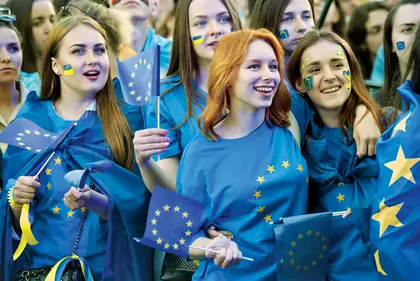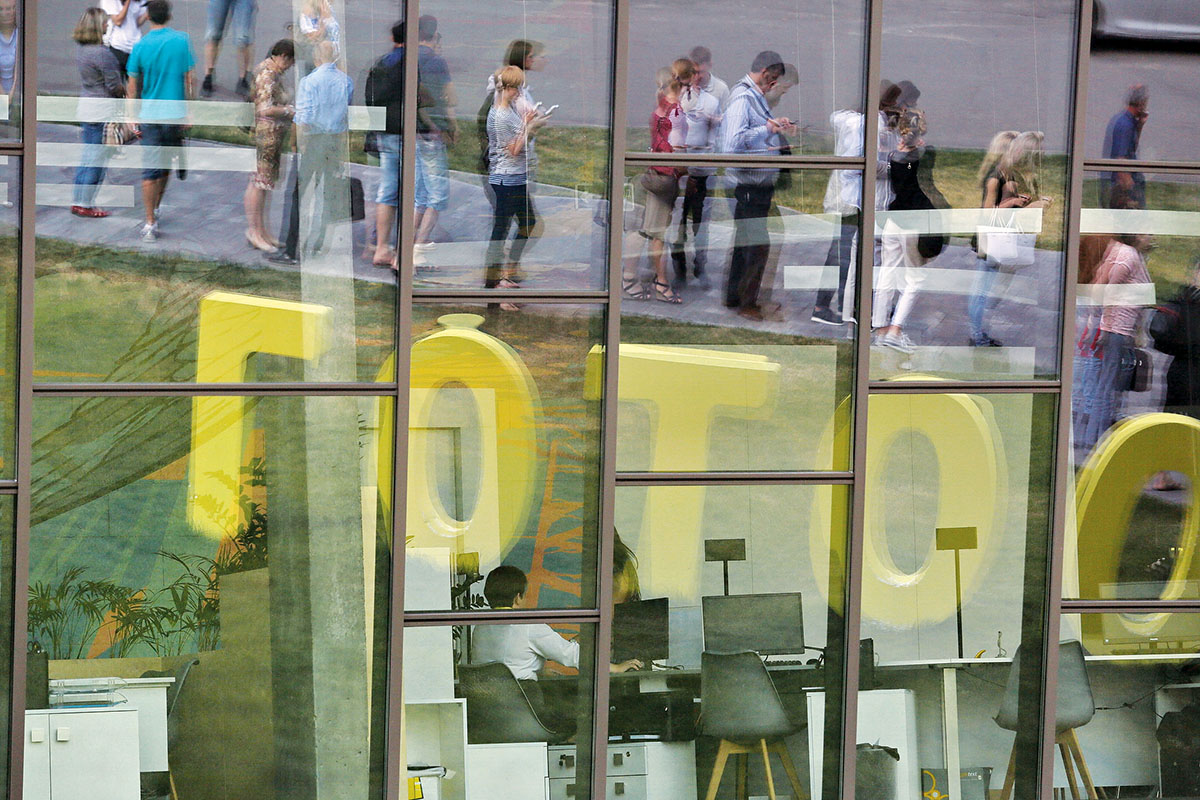Association Agreement comes into force
The long-awaited political and trade Association Agreement, designed to bring Ukraine closer to eventual European Union membership, came into effect on Sept. 1. It had been signed by President Petro Poroshenko on June 27, 2014, shortly after he came to power. Already, it’s bringing results. The EU-Ukraine Association Council meeting in Brussels on Dec. 8 hailed 27 percent growth in bilateral trade between the EU and Ukraine during in the first eight months of 2017. A key feature of the agreement is the Deep and Comprehensive Free Trade Area — which helped Ukraine’s exports to the EU to reach $14 billion, or 40 percent of the total.
JOIN US ON TELEGRAM
Follow our coverage of the war on the @Kyivpost_official.
Ukraine’s imports from the EU slightly increased to 42 percent, or $16.7 billion. Yet, among individual nations, Russia remains Ukraine’s largest trade partner despite its military invasion of Crimea and the war in the eastern Donbas since 2014. Russia accounts for $3.2 billion in Ukraine’s exports and $5.5 billion of its imports — a significant part of Ukraine’s $100 billion a year economy.
But Ukraine still has a long way to go to be seen as an EU-ready democracy. Despite noted improvements in health care, pension, education and public administration and decentralization, EU officials are disturbed about ongoing high levels of corruption, lack of rule of law and backsliding on critical reforms.
Visa-free travel
Ukrainians’ long-awaited desire to travel to most of the EU without needing a visa finally came into force on June 11, despite a last-ditch attempt by the Netherlands to derail or delay the deal. Despite the Dutch attempt, Ukrainians with biometric passports can now travel to all EU members, except the United Kingdom and Ireland, for up to 90 days. During the first half of 2017, more than 355,000 Ukrainians traveled to the EU without visas, Ukraine’s State Border Guard Service reported on Dec. 11. But this might soon come to an end. In its first Visa Suspension Report published on Dec. 20, the EU pointed out that Ukraine’s government must strengthen its cooperation with EU migration agencies, stop the attacks on anti-corruption agencies and create an anti-corruption court as soon as possible.
Ukraine loses EU loan
Ukraine’s government failed to fulfill conditions set by European donors — and consequently lost a 600 million euro loan. Some of the reasons include lawmakers failure to cancel a timber trade moratorium, to launch an automatic system for checking electronic asset declarations and beneficial owners of companies and failure to adopt a credit registry by the National Bank of Ukraine. Since 2014, the EU has pledged more than 12 billion euros in grants and low-interest loans; almost 3 billion euros have already been provided in macro-financial assistance. The program expires in January, but the EU is ready for a new bailout program, pending an evaluation of Ukraine’s reforms.
Education law
Poroshenko signed a new education law on Sept. 25 which requires Ukraine’s public schools teach in Ukrainian, a long-suppressed language during centuries of foreign rule of Ukraine. The law was met with harsh criticism from Russia, Hungary, Romania and Poland, who complained about discrimination. Hungary threatened to block Ukraine’s further EU integration and succeeded in blocking a Ukraine NATO commission meeting scheduled for Dec. 6. It even asked for the Organization for Security and Cooperation in Europe’s presence in Zakarpattya Oblast, where 150,000 Hungarians live. On Dec. 9, the Council of Europe’s Venice Commission asked for changes, but the Ukrainian government refuses to do so.
Future plans
The EU is willing to keep talking with Ukraine and helping the nation build a democracy, but is offering no promises of membership. The two sides, at its last Association Council meeting, talked energy, digital single market, customs union and establishing a common aviation area. The integration, if it continues, will likely be slow and steady in 2018 rather than swift and complete.
You can also highlight the text and press Ctrl + Enter





